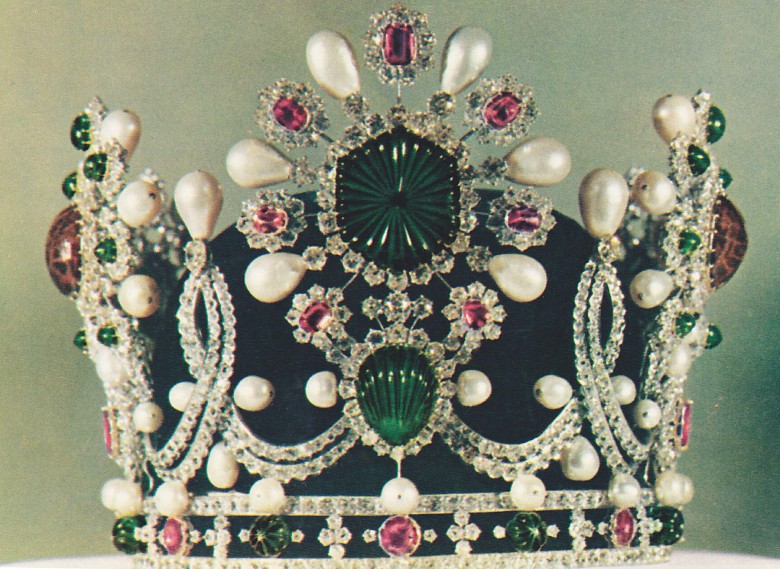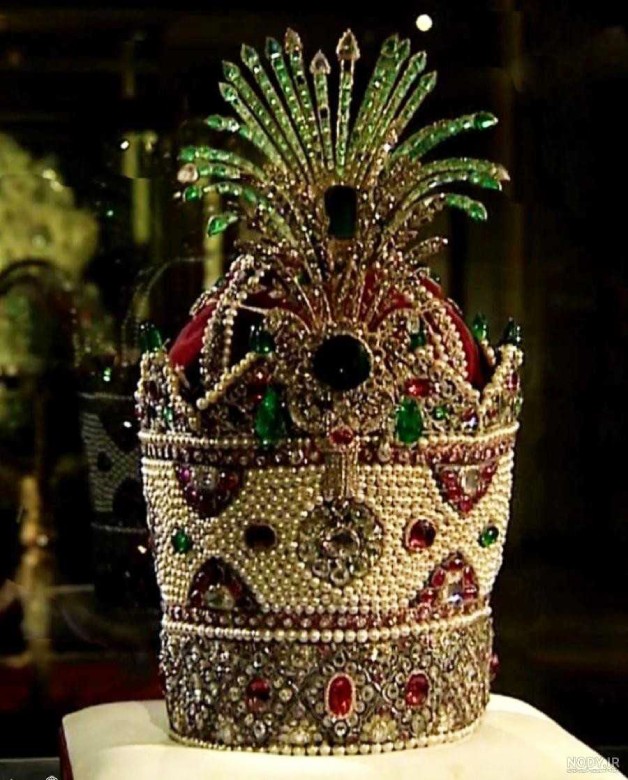Iran’s National Jewels Treasury: A Guide to Visiting
Admire Rare Gems and Priceless Artifacts

The Treasury of National Jewels in Tehran offers a rare glimpse into the grandeur of ancient Iran. If you are passionate about jewelry and history, this Treasury of gold is a must-visit. You can see the hand art mixed with the wealth of ancient Iran, which made the most incredible pieces of art ever; different crowns of queens and kings and an inheritance of old kingdoms of Iran.
You can see fights, bloods, and robberies behind each shine and the great kings’ efforts to maintain Iranian power. Located in Tehran and owned by the Central Bank of Iran, but being among UNESCO World Heritage, it belongs to the world. Priceless jewels and crowns were designed for special occasions of previous empires of Iran such as Safavid, Qajar and Pahlavi. Stay with us to know more about this Treasury.
Contents
Why We Need to Visit the Treasury of National Jewels?

Many reasons may trigger you to visit this Treasury; first, the historical background of each jewel and the Iranian kingdoms‘ fight for every piece. Second, it’s a cultural heritage belonging to the world not just Iranians, and you can see the art of gems. Third, for those interested in gems and jewels, this Treasury is a playground of gemology.
Fourth, it’s a unique collection you can’t find anywhere else since no government of Iran is allowed to exit these jewels from Iran. Last but not least, it’s a source of inspiration, these crowns are made by the best, and many interested in this field can be inspired by creativity and experience.
Famous Pieces of Jewels in Treasury of National Jewels
The name of this Treasury is tied to the name of the Daria-i-Noor (also known as Darya-ye Noor) diamond, but there are many more pieces to learn about. In this part, we will delve into the details of some pieces held there. All of the jewels mentioned here are made of the national jewel assets of Iranians, and many jewels have not yet been used.
The Empress’s Crown or Shahbanu’s Crown

The first one is an incredibly designed crown belonging to the last queen of Iran, Shahbanu Farah Pahlavi, the wife of Mohammad Reza Pahlavi, designed by Pierre Arpels in 1966. This designer won the competition between 50 other proposals sent for the empire to design the crown. The designer used 36 emeralds, 36 rubies, 105 pearls, 1,469 diamonds and one 150-carat emerald in the middle for designing this crown weighing approximately 2 kilograms, and the queen used this green-velvet crown once for the coronation of the previous Shah of Iran in 1967.
Pahlavi Crown

Another impressive crown is another inheritance of the Pahlavi Empire. This crown was made upon the order of Reza Pahlavi for commissioning the Pahlavi dynasty since he didn’t want to wear Kiani Crown belonging to the Qajar dynasty.
This crown is weight approximately 2 kilograms made of 3,380 diamonds; the largest sits in the center, which is one 60-carat yellow diamond, five emeralds, two sapphires, 368 pearls with a width of 20 cm and a height of 30 cm sitting on a red-velvet cap. Two kings of Pahlavi wore this crown three times; Reza Pahlavi wore it twice in his coronations, once in 1925 with Daria-i-Noor diamond and once a year later in 1926, his main coronation. The third time, Shah wore it in his coronation of 1967.
Kiani Crown

This crown was made upon the order of Fathali Shah, the second king of the Qajar dynasty. He and the other five kings of Qajar wore this crown. For 128 years, this crown was used in coronation ceremonies of this dynasty. It consists of 1800 pearls belonging to the Treasury, 300 emeralds, and 1800 rubies. Like the Pahlavi crown, this one sits on a red velvet cap. The largest emerald used in this crown is 80, and the largest ruby is 120 carats. This ruby is the booty Nader Shah brought to Iran during a war with the Mongols.
Jewel-Studded Globe

With a weight of approximately 37.5 kilograms and 51,000 gemstones, this piece of art is one of the heaviest handcrafts there. Emerald, sapphire, diamond, and ruby are some of the gemstones used in this globe. According to some sources, this piece is made on the order of Nasseridin Shah, one of the Qajar kings. He also has a photo standing over it, showing his power over the world. Some countries like Iran, Great Britain, France and some parts of Southern Asia are marked by diamonds. Seas and oceans are shown with emeralds, and diamonds show the borders between countries, some rivers and the equator.
Daria-i-Noor Diamond

As acknowledged by the gemmologists, it’s one of the purest and most valuable diamonds in the Treasury. It’s the largest pink diamond in the world and one of the most valuable diamonds with its twin Koh-i-Noor (also known as Koh-e-Noor, Kohinoor and Koh-i-Nur), which is now kept in the Jewel House at the Tower of London. This diamond is put between a frame on two sides where lions are sitting. This diamond was brought to Iran by Nader Shah about 285 years ago, after the conquest of India.
The history of this diamond is extensive. If we consider its age, it’s thousands of years old. It was mined and extracted from the mines of India. After Nader Shah’s death, it came into the possession of Shahrukh Khan, Nader Shah’s grandson, and then Lotf Ali Khan Zand and Agha Mohammad Khan took control of it. After that, it came into the hands of the Qajars, then the Pahlavis, and now it is housed in the National Jewelry Museum.
Book Iran Flights
Buy Iran flight tickets at the lowest price
Explore Iran’s culture and history with affordable and reliable flight tickets.
Conclusion
In this article, we looked into some of the jewels kept in the Treasury of National Jewels of Iran, and many more valuable pieces of jewelry are kept there that we didn’t mention here. Beyond their historical and cultural significance, these treasures offer endless inspiration and are well worth spending time.
FAQs of the Treasury of National Jewels
Where is the museum located?
This Treasury is located in Tehran, Ferdowsi Street before Jomhouri junction.
How does the central bank of Iran secure this Treasury?
Although this museum is open to the public, the central bank has strict security regulations for this museum.
Is photography allowed inside the museum?
No, photography is not allowed inside the museum to protect the integrity of the jewels and the security of the collection.






